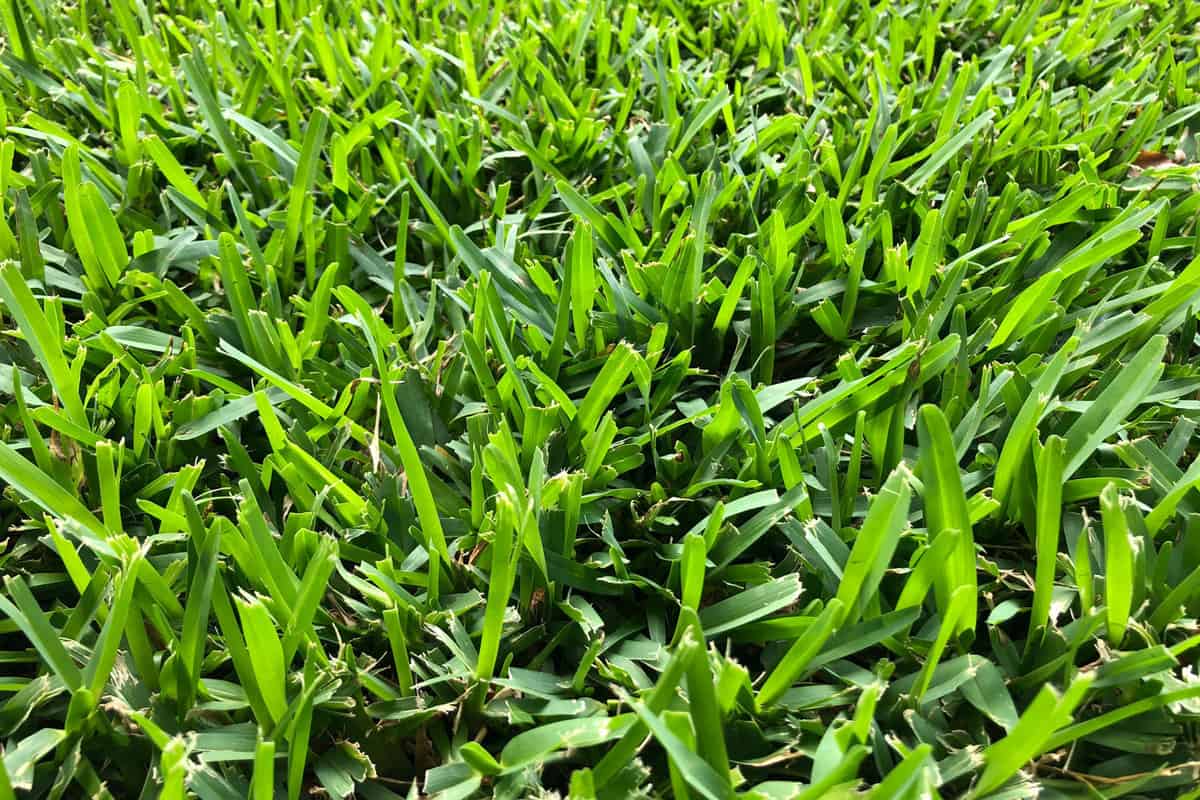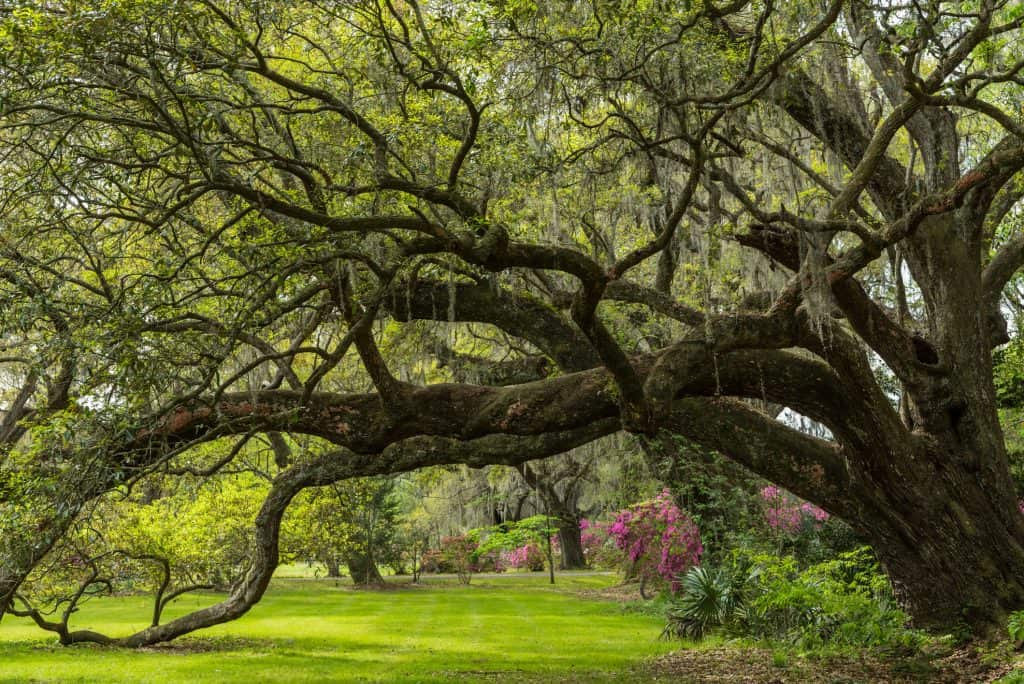Knowing which grass grows best in shaded areas in Texas can save you time and trouble. While having some shade on your property is desirable, it can hinder the growth of a thick, healthy lawn. Trees block large portions of my backyard from the sun, which is why I have researched the subject.
First of all, grass needs at least some sunlight to reach its full potential. But, that doesn't mean it's impossible to grow grass in the shade. A few examples of grasses that stand a better chance of being successful in shady spots include:
- Bahiagrass
- Centipede grass
- Zoysia grass
- Augustine grass
These are all beautiful options that have their own unique growing conditions. Keep reading as e delve into the details to help you choose the type that is right for your lawn!

Best Grass to Grow in the Shade in Texas
Several kinds of grass can survive with as little as four to six hours of sun. It doesn't even have to be direct sunlight. Filtered sunlight coming down through tree cover it may be enough to do the trick. As long as you choose the right grass and remember a few simple maintenance tips, you can have a beautiful lawn even in light to moderately shaded areas.
Besides being shade tolerant, bahiagrass, centipede grass, Zoysia grass and St. Augustine grass are also warm-season grasses. These do better in the South and warmer climates. Many types of cool-season grass will also grow in shade but in Texas, your best bet is a warm-season option. You may already be familiar with some of these grasses, but we’ll talk about each one a little more in-depth.
Bahia Grass

Bahia Grass is hearty enough to stand up to shade, drought conditions, disease, and sandy soils. It is native to subtropical regions but is also found in warmer areas of the U.S. While sunlight is preferable, bahiagrass will grow in limited shade.
Centipede Grass

Centipedegrass requires more care than bahiagrass, particularly when it comes to watering. Frequent watering creates deeper roots. This is helpful wherever the grass is growing. While not as resilient as some varieties, centipedegrass can still provide you with a vibrant looking lawn in moderately shaded areas.
St. Augustine Grass

St Augustine grass also needs a great deal of moisture. This makes sense as it is often found along shorelines and marshes. You won't have satisfying results in deeply shaded areas with St. Augustine grass but it should do okay in light shade.
Zoysia Grass

Zoysia grass responds well to challenging conditions such as drought, heat, and cold. It can also tolerate lightly shaded spots. Introduced in the U.S. at the end of the 19th century, Zoysia has enjoyed popularity due to its density and low maintenance requirements. Like all the grass we’ve discussed, it does best in the sun but can make do in the shade.
How to Grow Grass in Shade in Texas

First, you need to determine how much sunlight falls on the shaded area. As stated earlier, 4-6 hours of sun is ideal. If the area gets less than that, you need to consider pruning the surrounding trees (more on that later). Next, you need to rake the soil to remove debris, eliminate uneven spots and loosen things up. Then you can plant your grass seed. Water the grass should once or twice a day until it reaches mowing height, which is about 3 inches. After that, you can move to a normal watering schedule which will vary according to the type of grass and conditions.
Grass That Will Grow in Total Shade in Texas
While some varieties adjust to less sun better than others, no grass will tolerate complete shade. As you remember from biology, through photosynthesis chloroplast cells transform sunlight into food. It's no different for grass. A complete absence of this vital source of energy will kill your turf.
Growing Grass Under Oak Trees in Texas

Pruning is the best thing you can do when you have an oak tree keeping your grass shaded. This may seem obvious but it isn't as simple as lopping off low hanging branches. You want to open up the canopy to allow sunlight to reach your lawn. The best way to do this is to trim back interior limbs. Not only is it good for your grass, but the tree will also benefit, too. If you aren't sure of what you're doing, hire a professional to avoid doing permanent damage to the tree. Oak leaves are notorious lawn killers. You should rake them up to ensure they don't inhibit the growth of your grass.
It isn't enough to pick a grass that can survive in shaded areas. You have to give it a fighting chance by putting some extra time and effort into tree care, watering, and mowing. Here are some other commonly asked questions about growing grass in shaded areas:
Does Grass Under Shade Need More Water?
It depends on what is blocking the sun. If the grass is under a tree, you'll want to water the area more often. There are two ways trees rob turf of moisture. As we talked about, a thick canopy can prevent water from reaching the grass growing below. That is something you can address by pruning the tree. But, you can't do anything about what is going on beneath the surface. Down in the soil, the tree's root system is competing with the grass roots for available moisture. Since the grass is already at a disadvantage in the shade, you want to water tree-shaded areas deeply. If the shade comes from something that doesn't need moisture, such as a structure, you can water less often.
You may also find this post helpful –
For How Long Should You Water the Lawn?
Do I Need to Be Careful When Mowing Shaded Spots?
You want to pay attention to your blade settings. In general, it's a good idea to raise the blade 1/2 an inch to 1 inch higher when mowing shaded areas. You want to avoid scalping. Scalping is when you mow with the blade at the lowest setting to eradicate thatch or reduce the need to mow. While this practice may have its place, it’s the wrong approach in shaded areas and can undo all your hard work.
Here are the best lawn mowers for wet grass.
Enjoy a Beautiful Lawn, with a Little Effort
Growing grass in shade in Texas climate takes some extra effort. As I have shown you only certain grasses will tolerate limited sunlight. Even if you pick the right type of grass, there are no guarantees you’ll get the results you’re after. Any time you try to exert your will on nature you are in for a fight. But, don’t let that discourage you. If you plan carefully and put forth the effort, you can increase your chances of winning.
If you live in Texas, you may also want to read this post -
How to Grow Pumpkins in Texas?
Elsewhere in the Southern USA? Check out our post: What's the Best Grass for Shade in the South?

